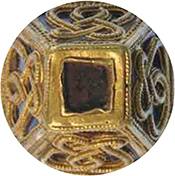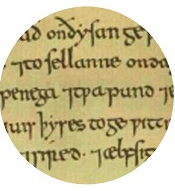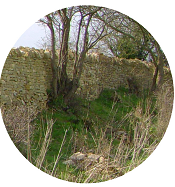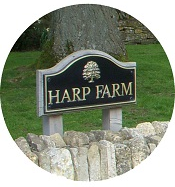Public
The Landscapes of Governance project actively supports volunteers and community groups undertaking ongoing research, including: Community Landscape and Archaeology Survey Project (CLASP) in Northamptonshire, Wiltshire Archaeological and Natural History Society. It is partner to the Friends of Thynghowe, in Nottinghamshire, who have successfully attracted Heritage Lottery Funding for two projects Thynghowe and the forgotten heritage of Sherwood, 2-year grant, £49,900 (2011), and The Vikings of Sherwood: Investigating the Assembly Site of Thynghowe, 1-year grant, £29,600 (2015).
The Landscapes of Governance project was selected as a REF 2014 impact case-study for the University of Nottingham. The report: Place-names and the public: letting the landscape speak can be accessed here»
Examples of other scholars using our datasets
The datasets being produced by the Early Medieval Atlas will be of use for many research purposes. Examples of current uses of the datasets are listed below:
- Abigail Tompkins, Institute of Archaeology, Oxford University, is using the shapefile of Domesday hundreds as part of her PhD research on the late Roman to early Medieval Warwickshire Avon valley.
- Jennifer Muller, Archaeology at University of Bristol. Masters student Jennifer Muller (Bristol) is using the assembly sites in England, 5th - 11th centuries data to help enhance her study of boundaries from the Iron Age onwards in the Avon Levels and surrounding upland along the Severn Estuary.
- Katherine Blayney, Kings College London, is using the shapefile of Domesday hundreds as part of her PhD research into the tenurial structure of Hampshire before and after the Norman Conquest.
- The EngLaId ('English Landscape and Identities') project is using the shapefile of Domesday hundreds as part analyses of change and continuity in the English landscape from the middle Bronze Age (c. 1500 BC) to the Domesday survey (c. 1086 AD).
- David Worsell, Archaeology, University of Winchester, is using the GIS-enabled mid-eleventh century hundredal reconstruction dataset in a PhD study of landscape and economy in early medieval Sussex.
- Michael Shapland, UCL Archaeology South-East, is using the shapefile of Domesday hundreds in his research on early medieval churches in landscape.
- Matthew Austin, Archaeology, University of Reading, is using the project's hundredal reconstruction GIS dataset for his PhD, which is investigating the wider landscape around middle Saxon great-hall complexes in Southern England.
- Richard Purkiss, History, University of Oxford, is using the shapefile of Domesday hundreds in his D.Phil. research on government and society in 10th-11th century East Anglia.
- Rory Naismith, History, King's College London, is using this data for a map to accompany an article on the Ely Memoranda: a folio of c. 1009-35 which discusses management of lands belonging to Ely and Thorney.
 Close
Close





